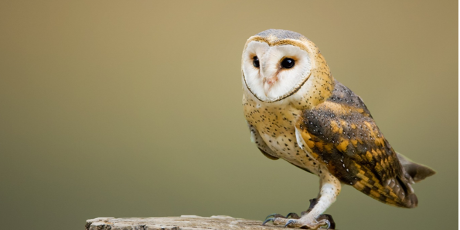The only story you'll read today about 12 kilos of owl vomit 14 Oct 2020

Analysis: how a barrel in west Cork produced unexpected and significant facts about the differences between male and female mammals
Dr Paddy Sleeman, School of BEES and the ERI
Originally published on RTE Brainstorm
Back in August 1994, Mick O'Sullivan and Michael Fox put a barrel up a tree in west Cork. They did this to provide an alternative roost for a pair of barn owls who were roosting in a chimney they were repairing.
It's fair to say that they got it in the barrel. By 2013, 19 years later, the barrel was full to the brim with owl pellets - or what had been owl pellets but had become a gooey mixture with bones and hairs. These pellets are parts of prey which remain after been killed and digested which the owl coughs up or, if you like, vomits. It's what keeps the owls light.
We all throw away stuff that we don't need, be it chicken bones, a heavy coat on a warm day or an ice cream wrapper. It's not that important for us, but it's a matter of life or death for owls, especially if prey is scarce, and they have to fly a long way to get more. This happens most often when they have young in the nest.
The barrel in west Cork barrel had 12 kilos of mouldy prey remains and a few fresh pellets. Such pellets are really handy for the scientist, as by examining of the bones, the prey can be identified. And in some, unfortunately fewer, cases, when the pelvic bone is found, the sex of the prey can be told by shape.
The prey for owls are small mammals. These may be small, but they drive ecosystems where they are the main herbivores, dispersers of fungi, seed eaters, prey and disease vectors. For example, small mammals are involved in the spread of bubonic plague, Lyme disease and Weil's disease. As a result, scientists are keen to monitor small mammals and owl pellets provide a handy way to do this. Ireland has a few types of small mammals: (one vole, two species of mice and shrews) and is a good place to do this.
A UCC student at the time, Sean Doyle, set about the daunting task of digging through 12 kilos of prey remains helped by volunteer citizen scientists. What he found is odd. In a sample of over 5,000 of small mammal remains, 90% of those that could be sexed were female, a finding which was both totally unexpected and statistically significant. The pelvic bone is necessary to tell female small mammals from males and it's necessary to point out that fewer of these survive being eaten or swallowed by owls than, say, skulls so they make a smaller sample.
So what is going on? Were female small mammals, heavy with young, targeted by the owls? It could be, but females of all ages including young pre-breeding females were present. Perhaps the barrel roost was used in a season or time of day when there were more females about? Perhaps the owls’ personalities effect the way they hunt, which they do by seeing and hearing their prey? Maybe these owls hear females better? We know that another way owls track their prey is by detecting their urine, so maybe these owls were better at detecting female as opposed to male pee, but that seems unlikely.
Males take more risks than females. They are more wider ranging, rushing about concerned with status, less alert and even more stupid and thicker. Because of this, the preoccupied males would be expected to make up the majority of the prey. For small mammals such as young rats, voles, mice and shrews, it is argued that the males run about on the ground and are therefore more at risk as prey for birds such as owls and hawks. The females, on the other hand, tend to be underground, in nests with young and are believed to be more at risk as prey for terrestrial mammal predators such as stoats.
Researchers in the United States found that invasive species such as the nasty stinging fire ant seemed to force small mammals out from cover and become more at risk from owls. Could there be an invasive species in west Cork that is forcing female small mammals to take more risks then males?
It is also possible that our stereotype of males and females is thwarting our ability to read the meaning of owls’ predatory habits. We may expect females to stay in the nest but, in species like ourselves and small mammals where the sexes are roughly the same size, maybe we ought not to assume that it's the males who take more risks.